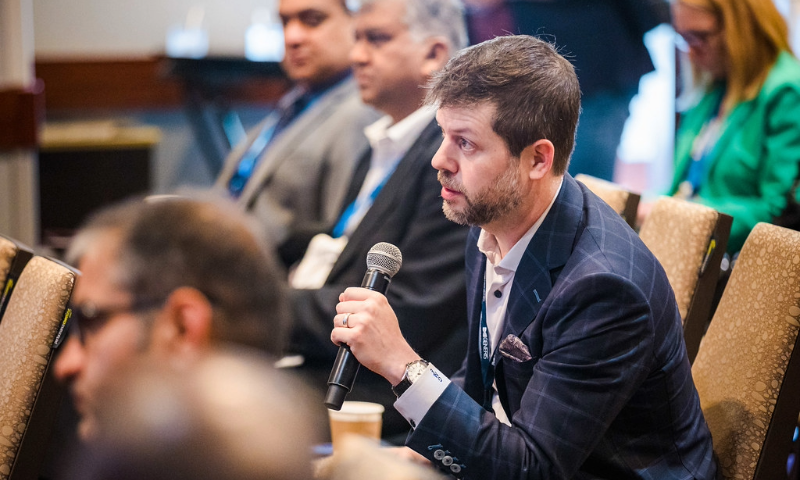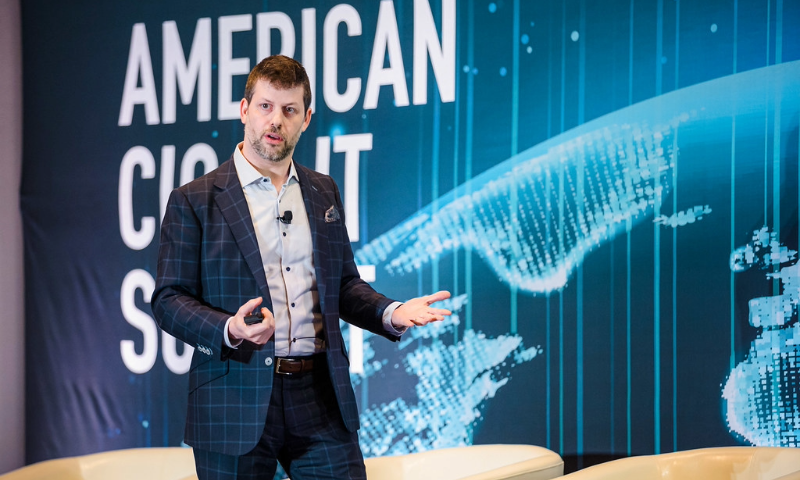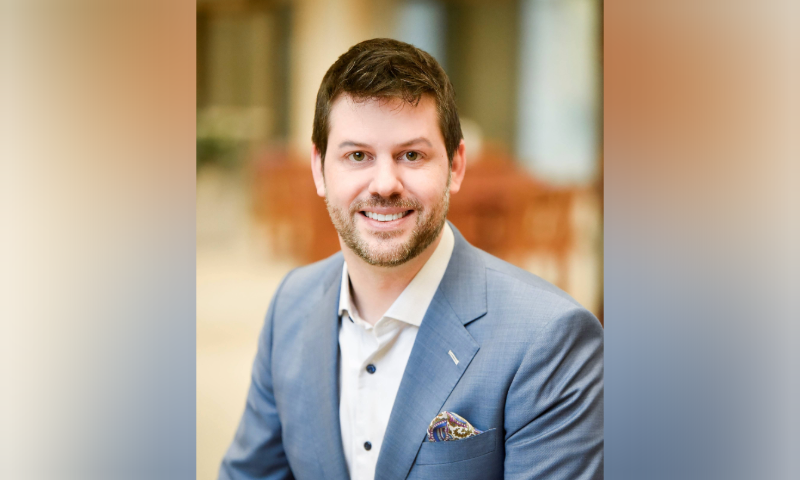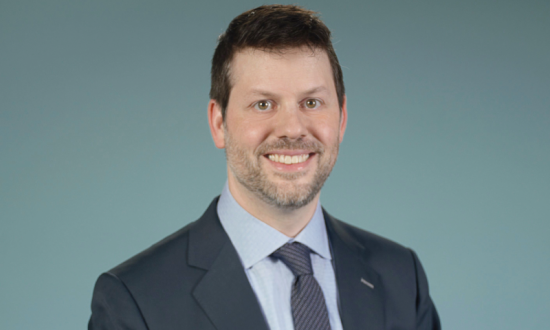Grant Ecker is the Founder and Chairman of the Chief Architect Forum. Most recently as Vice President and Chief Enterprise Architect at Danaher, Grant built their Architecture and Artificial Intelligence capabilities. Previously, Grant was the VP of Architecture at Walgreens Boots Alliance and held a similar role at Medtronic. Grant also built EA’s operations at Lowe’s Home Improvement and grew into leadership at General Mills. Grant is a Certified Coach, received his MBA from the Carlson School of Management, his BSCS from Washington University in St. Louis and he holds various board advisory roles out of Chicago, Illinois.
Recently, in an exclusive interview with Digital First Magazine, Grant shared his professional trajectory, the objective and vision of Women In Architecture (WIA), insights on the future of enterprise architecture, the best piece of advice he has ever received, future plans, words of wisdom, and much more. The following excerpts are taken from the interview.
Hi Grant. Tell us about your career path. What experiences have brought you here?
I started my IT career journey enamored by technology and seeking opportunities to support the business with IT solutions. This desire helped me grow from a technology enthusiast into a software developer at General Mills where I developed solutions for business teams. I gradually expanded this scope to grow with my intended purpose by moving into a program leadership role where I had the opportunity to bridge the business with technology across larger efforts and scopes. From here, I grew into gradually expanding management roles, leading technology platforms, starting in ecommerce, growing into manufacturing and eventually landing in a role managing the company’s global collaboration technologies.
It was at this point that I was recruited away by Lowe’s Home Improvement to lead their collaboration platform on a broader scale. After a short period, I stabilized the collaboration platform, and I was moved into an IT people transformation effort within HR IT to support the restructuring and building job family designs to reshape a newly joining CIO’s organization. It was from within this HR IT transformation role that I had the chance to make a meaningful career shift into Enterprise Architecture. I saw a box appear on an organizational chart I had long sought after, as it aligned with my purpose of connecting business and technology with leverage of my experience in program management. In this role I would be responsible for the process, governance, and operations of the EA department.
This moment began the decade long career focus shift into transforming small and reactive centralized architecture practices that primarily looked over the company’s major solution designs before they were deployed. I helped to support these practices in creating a shift in focus towards leading an engaged community of 100-200 architects by connecting all architecture disciplines beyond the central team’s reporting lines with community leadership and connections into vendor management, finance, program management and annual planning teams and their processes. Once I had made this shift for Lowe’s Home Improvement, I was fortunate to have a recruiter seeking a Director leader for the US team at Medtronic reach out and recruit me to join their practice.
The story at Medtronic was similar, I lead their US practice and helped to shift the team into a proactive and globalized the process across the broader EA organization, ultimately earning the role as Global Chief Architect after 2.5 years into the journey. When a reorganization was displacing my position after 5 years at the company, I made the shift to join Walgreens Boots Alliance (WBA) as their IT Vice President and Global Enterprise Architecture leader.
At WBA, I helped the company make the same pivots I had done at Lowes and Medtronic while also harmonizing the processes and organizational structures across the Walgreens and Boots EA teams that would accommodate the differing challenges and opportunities in their respective geographics and businesses. This went on for several years, until the company intended to divest their Boots business. Given I didn’t want to displace either of the strong EA leaders who were now heading up the architecture teams and Walgreens and Boots respectively, I sought to execute on a succession plan and move to a new organization so the Walgreens EA leader could succeed me in my role as Boots was divested. At this time, I joined Danaher as their Vice President and Chief Enterprise Architect.
At Danaher, the challenge was different as they had grown inorganically and had few integrations across their family of subsidiary companies. I invested in creating community and portfolio management across their organization while also incubating the AI capability as an interim Chief AI Officer. In the interim CAIO role I was building the company’s governance and guardrails in collaboration across corporate functions and driving a common approach in the deployment of technology including championing a company-wide chatbot and leading the deployment of a gradually expanding pragmatic implementation of Microsoft’s Copilots across businesses.
I am currently seeking my next role as the opportunity at Danaher has recently come to a logical and mutual conclusion. This shift in employment has allowed me to focus more fully on my thought leadership and non-profit activities leading the Chief Architect Forum I founded in 2021 in partnership with Paul Preiss, the CEO of IASA Global.

Brief us about the mission and vision of Chief Architect Forum. What was the inspiration behind establishing it?
We started the Chief Architect Forum in May of 2021 after I joined a company that was unable to fund membership in a paid forum of my peers where I had previously enjoyed membership. One of the important parts of leading an architecture team is ensuring we have access to insights beyond the company’s internal knowledgebase. This helps the companies we work for prepare for, address, and localize industry trends aligned with their needs.
The answer to this challenge came quickly via an evolving conversation with Paul Preiss, the CEO of IASA Global, which is a non-profit association for all architects.
Paul had had deployed a forum of Chief Architects in the past, but it hadn’t yet taken hold and he wanted to give the group another attempt at launching. Together, we founded the group, and I took on the role of Chairman and Founder, as I activated the forum by connecting Paul and I’s network of Chief Architects, creating a quarterly event which gave us an opportunity to discuss our shared focus in architecture as a peer forum.
Noticing a challenge of paid forums where I had previously enjoyed membership, the value was tremendous, but a challenge often arose when the senior leaders who sponsored membership for a company’s seats could not attend a key event and sent delegates to join in their place. While this activity sounds innocuous, the result changed the dynamic of the event as these delegates were often heavy contributors who monopolized the conversation with detail-level contributions. The more senior leaders joining these events would often lean back and create space for the joining delegates, but at the end of the event they would decide that the next event would be better served with their delegate joining in place of their attendance, and this would gradually reduce what was intended to be an executive forum of practice leaders into what often became a practitioner forum.
This is where the Chief Architect Forum is different. We are a no-cost forum for our members which eliminates the pressure of “owned seats” to fill for attendance. The members, after being admitted following their application’s review from a board of their peers, are free to join any event we hold, but they are not allowed to delegate their seat to non-members. We might only see a member join us a few times a year, but their absence vs delegation ensures the altitude of conversation remains at the appropriate leader altitude of true Chief Architects.
At the forum, our purpose is to test, challenge and support the state of the art and science for Business and Technology Architecture and its evolution over time. We hold a quarterly, 2-hour peer forum for heads of architecture and various peer connects for our aligned practice focus areas. Our Imperatives are to learn from our peers, develop our talent (including ourselves), advance our profession, and build our networks.
Given our scale has grown, we are expanding into in-person and topic-aligned virtual events for our members. We’ve held 2 inaugural in-person forum events in the last 6 months: 2023 Q4 in the US, and 2024 Q2 in Europe with plans to continue this as an annual tradition. We have also launched local chapters in 12 cities across the US and Europe where we are creating local quarterly shorter events and dinners for members who live in geographic proximity. We are also launching global virtual topic-based conversations across our membership with peers leading conversations that unify membership on common priority areas.
It’s truly inspiring having a place to belong and share among my peers and I’ve joined many of our members in appreciating the fact that we are not alone and have many things in common with our peer Chief Architect practice leader members.
You are a Founding Board Member and Ally for Women In Architecture (WIA). Can you please tell us about this global initiative and its objective and vision?
Women in Architecture (WIA) seeks to increase the representation of Women in the Architecture profession from the challenging 10-15% we are seeing today. I am joined by an inspiring group of women and other ally male architecture leaders who are seeking to create pathways for all women to join and advance within architecture careers.
Our mission is to drive the expansion of women in architecture roles towards an equal balance and to enable women to thrive and contribute with impact. The WIA initiative seeks to support the increase in gender diversity in architecture through pathway building, awards and grants, education, data gathering, content, community exchange, events and mentoring.
It’s inspiring to see the impact this group is already having on our members and our community, and it is simultaneously uplifting to see this community coming together as we pursue our meaningful purpose.

What are the proudest innovation moments from your career?
When I think about meaningful innovation moments, I am exceptionally proud of the work I did to lead AI incubation, governance, and guardrails for the C-Suite at Danaher by developing AI global guidance, deploying enterprise AI solutions/copilots, identifying trends and mitigating AI’s risks and threat vectors. It was incredibly motivating to be empowered to leverage external learning from the Chief Architect Forum’s membership and educational partnerships to then lead across corporate functions to align on our north star guidance and aligning that steer into partnerships I helped form across technologists in all functions within Danaher’s portfolio of companies. Together we guided the company’s approach and built significant momentum in this emerging space.
What new innovations and emerging technologies are you paying attention to right now?
I am currently watching the AI space for emerging business case driven adoptions of technology, along with the flip side of finding viable risk mitigating approaches that limit AI’s threat of hallucinations, bias and data and insight leakage. There is a lot of noise in the AI space today and one of the things a Chief Architect can help with is showing our business teams how to navigate and find the signal within the noise. This work aligns perfectly with my professional aspirations of supporting the business with IT solutions.
What are the most pressing issues in the field that might keep you up at night?
I think the lack of consistency in architecture practices is a major issue for our profession. If everyone brings a different briefcase of methodology into their Chief Architect practice, it is exceptionally difficult to develop best practices and grow as a discipline. This is one of the reasons I’m so pleased to be partnered with IASA Global in the Chief Architect Forum. Over time we hope to unify leaders of architecture to collect and codify the best practices of our profession together into IASA’s open-source body of knowledge called the BITABoK, which is already being adopted by many major enterprise architecture tool vendors.
What does the future look like in the architecture space, i.e., what are the kind of developments you’ll be looking for?
EA continues to move closer to Innovation, Digital Transformation and other large organizational shifts and changes by creating ad hoc teams across the in-scope domains where change is occurring. We are starting to see invitations to participate and even lead portions of the diligence activities that were previously and often exclusively performed by mergers and acquisitions functions with the support of external consulting firms. This focus is a welcome strategic addition for EA and a good fit with our capabilities. When EA has activated a federated organization of Architects with participation from business, information, solution, technology and security architecture domain leaders across the company, the EA community becomes a natural place to act as change catalyst and transformation leaders for our IT organizations.

In your academic or work career, were there any mentors who have helped you grow along the way? What’s the best piece of advice you have ever received?
Paula Winkler helped me early in my executive leadership journey in moving away from IQ based approaches to step into EQ as a primary way of leading others. This moment was a difficult shift where I had to adapt to different expectations moving from a contributor focus to a leader of others, and I appreciate the self-awareness and curiosity that she helped me develop to make the shift. Ultimately Paula’s guidance helped me so much that I decided to pursue an executive coaching certification which has helped me unlock this same shift for others as I continued to grow and learn myself.
What are your passions outside of work?
I love to ski, boat, bike and spend time with my family, my wife Madolyn and our 2 dogs. We are fortunate to have recently purchased a farm in Northern Illinois and the two of us are enjoying our work of planning out our future homestead together.
Where do you see yourself in the next 5 years?
In the next 5 years my wife and I foresee starting a family and having several children as I continue to evolve in my career towards CTO and CIO roles. Given the current gap in my employment, It’s been a gift that has allowed me mindfully work at making both of these goals come into fruition.
What advice would you give someone who wanted to have the kind of success that you have had?
The best advice I can offer someone seeking to find success is to first know their purpose and values, and then to find meaningful work that honors these personal foundations. I find that when we are working on what we love, we are far more likely to be successful in our pursuit and far more willing to go the extra mile to attain our stretch goals, because we personally care about the outcomes we are seeking.






